90 DEGREE ROTATION ON A COORDINATE PLANE
Subscribe to our ▶️ YouTube channel 🔴 for the latest videos, updates, and tips.
Rotating the shape means moving them around a fixed point. There are two directions
i) Clockwise
ii) Counter clockwise (or) Anti clockwise
The shape itself stays exactly the same, but its position in the space will change.
|
90° clockwise 90° counter clockwise |
(x, y) ==> (y, -x) (x, y) ==> (-y, x) |
Graph the image of the figure using the transformation given.
Problem 1 :
rotation 90° counterclockwise about the origin.
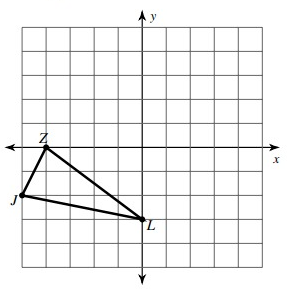
Solution:
Given, J = (-5, -2), Z = (-4, 0) and L = (0, -3)
Here, triangle is rotated 90° counterclockwise. So, the rule that we have to apply here is
(x, y) ---> (-y, x)
J(-5, -2) = J'(2, -5)
Z(-4, 0) = Z'(0, -4)
L(0, -3) = L'(3, 0)
Vertices of the rotated figure are
J'(2, -5), Z'(0, -4) and L'(3, 0)
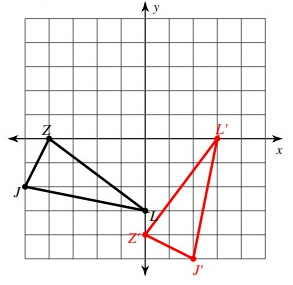
Problem 2 :
rotation 90° clockwise about the origin
B(-2, 0), C(-4, 3), Z(-3, 4), X(-1, 4)
Solution:
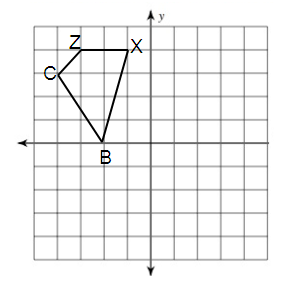
Here, triangle is rotated 90° counterclockwise. So, the rule that we have to apply here is
(x, y) ---> (-y, x)
B(-2, 0) = B'(0, -2)
C(-4, 3) = C'(-3, -4)
Z(-3, 4) = Z'(-4, -3)
X(-1, 4) = X'(-4, -1)
Vertices of the rotated figure are
B'(0, -2), C'(-3, -4), Z = (-4, -3) and X'(-4, -1)
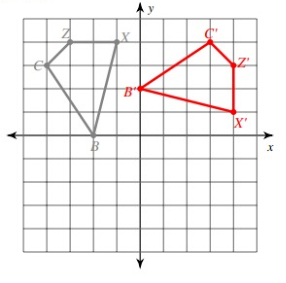
Rotate the figure as indicated. Label the image using prime notation.
Problem 3 :
rotation 90° counterclockwise about the origin.
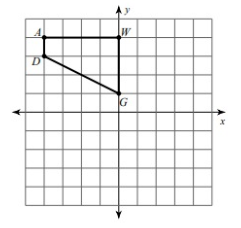
Solution:
Given, A = (-4, 4), D = (-4, 3), G = (0, 1) and W = (0, 4)
Here, triangle is rotated 90° counterclockwise. So, the rule that we have to apply here is
(x, y) ---> (-y, x)
A(-4, 4) = A'(-4, -4)
D(-4, 3) = C'(-3, -4)
G(0, 1) = G'(-1, 0)
W(0, 4) = W'(-4, 0)
Vertices of the rotated figure are
A'(-4, -4), D'(-3, -4), G'(-1, 0) and W'(-4, 0)
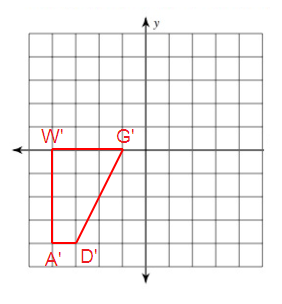
Problem 4 :
rotation 90° counterclockwise about the origin
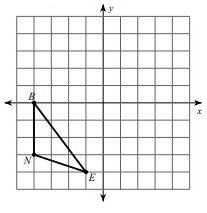
Solution:
Given, B = (-4, 0), N = (-4, -3) and E = (-1, -4)
Here, triangle is rotated 90° counterclockwise. So, the rule that we have to apply here is
(x, y) ---> (-y, x)
B(-4, 0) = B'(0, -4)
N(-4, -3) = N'(3, -4)
E(-1, -4) = E'(4, -1)
Vertices of the rotated figure are
B'(0, -4), N'(3, -4) and E'(4, -1)
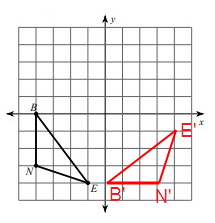
Problem 5 :
rotation 90° counterclockwise about the origin
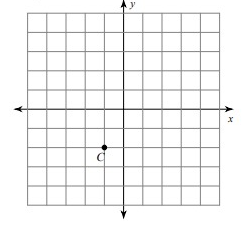
Solution:
Given, C = (-1, -2)
Here, triangle is rotated 90° counterclockwise. So, the rule that we have to apply here is
(x, y) ---> (-y, x)
C(-1, -2) = C'(2, -1)
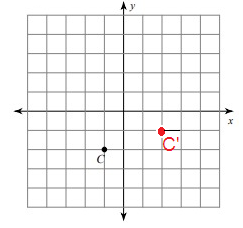
Problem 6 :
rotation 90° counterclockwise about the origin
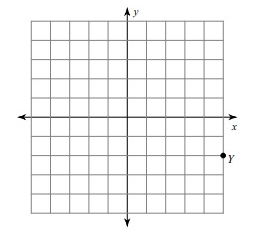
Solution:
Given, Y = (5, -2)
Here, triangle is rotated 90° counterclockwise. So, the rule that we have to apply here is
(x, y) ---> (-y, x)
Y(5, -2) = Y'(2, 5)
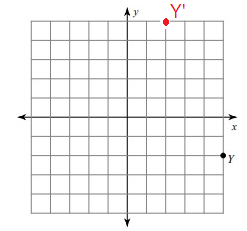
Problem 7 :
rotation 90° counterclockwise about the origin
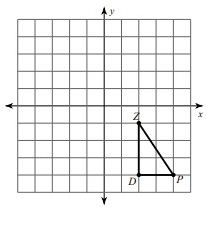
Solution:
Given, Z = (2, -1), D = (2, -4) and P = (4, -4)
Here, triangle is rotated 90° counterclockwise. So, the rule that we have to apply here is
(x, y) ---> (-y, x)
Z(2, -1) = Z'(1, 2)
D(2, -4) = D'(4, 2)
P(4, -4) = P'(4, 4)
Vertices of the rotated figure are
Z'(1, 2), D'(4, 2) and P'(4, 4)
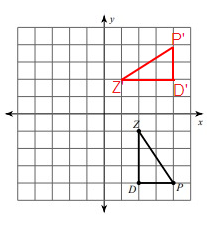
Problem 8 :
rotation 90° counterclockwise about the origin
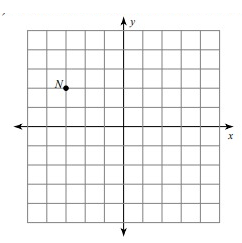
Solution:
Given, N = (-3, 2)
Here, triangle is rotated 90° counterclockwise. So, the rule that we have to apply here is
(x, y) ---> (-y, x)
N(-3, 2) = N'(-2, -3)
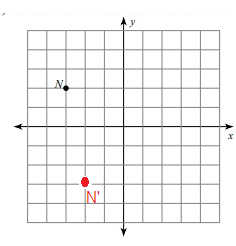
Problem 9 :
rotation 90° counterclockwise about the origin
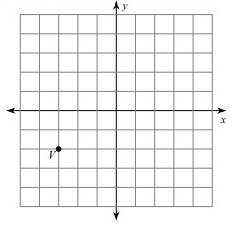
Solution:
Given, V = (-3, -2)
Here, triangle is rotated 90° counterclockwise. So, the rule that we have to apply here is
(x, y) ---> (-y, x)
V(-3, -2) = V'(2, -3)
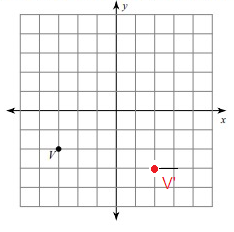
Subscribe to our ▶️ YouTube channel 🔴 for the latest videos, updates, and tips.
Recent Articles
-
Finding Range of Values Inequality Problems
May 21, 24 08:51 PM
Finding Range of Values Inequality Problems -
Solving Two Step Inequality Word Problems
May 21, 24 08:51 AM
Solving Two Step Inequality Word Problems -
Exponential Function Context and Data Modeling
May 20, 24 10:45 PM
Exponential Function Context and Data Modeling